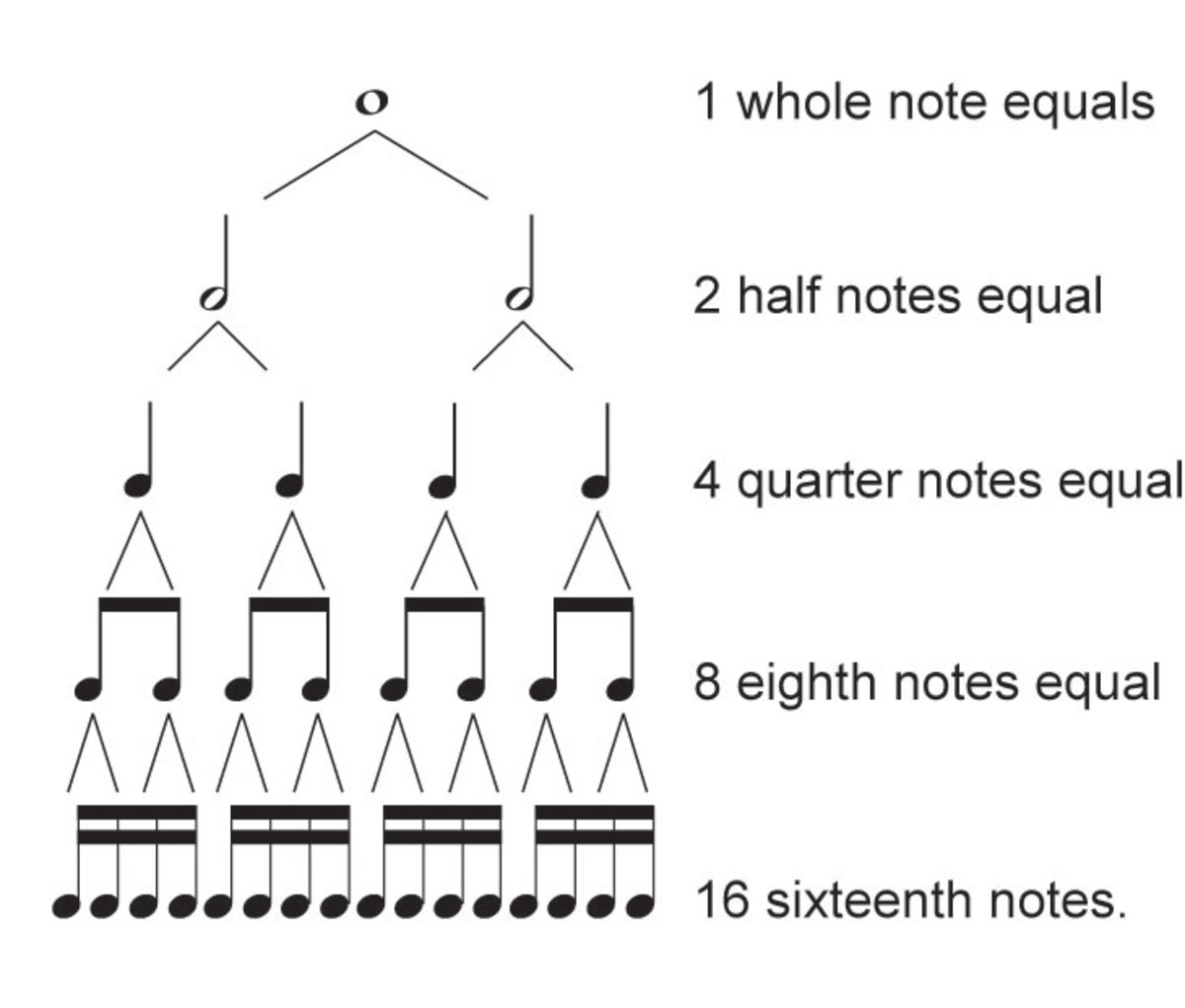Whole rest are usually on a line and it looks like a hole or an upside down hat. The half rest looks like a hat. The most common rest is a quarter rest and is held for a beat. The smaller rests look like sevens. As the nots get smaller, the rests add a line at the top. The chart above helps illustrate this.
Saturday, February 18, 2017
Rests
Whole rest are usually on a line and it looks like a hole or an upside down hat. The half rest looks like a hat. The most common rest is a quarter rest and is held for a beat. The smaller rests look like sevens. As the nots get smaller, the rests add a line at the top. The chart above helps illustrate this.
Rhythm notes/Time signature
The notes aren't always played at the same beat. There are quarter notes, eighth notes, whole notes, sixteenth notes, etc. The time signatures determine the rhythm of the music. The most common time signature is 4/4. The top note represents how many beats are in a measure, the sections a piece of music is divided into. The bottom note determines which note gets the beat. There is a small "rap" that younger people say when they are learning the time signature. For example, in 4/4, it goes like this, "Four beats in every measure and the quarter note gets the beat." A quarter is 1/4. This is how you know that the four on the bottom is the quarter note that gets the beat.
The whole note gets all of the beats in that measure, four beats in 4/4. Half notes are equal to half of the whole note. This continues for the rest. Two quarter notes are equal to a half note, two eighth notes are equal to a quarter note, and two sixteenth notes are equal to one eight note. Quarter notes usually are equal to one beat. When counting whole notes, half notes and quarter notes, you can just count the beats with regular numbers (1,2,3,4..) When you are dealing with an eighth note, you count by saying, "one and, two and, etc." Sixteenth notes are counted by saying "one-E-and-A (uh)."
Subscribe to:
Comments (Atom)
